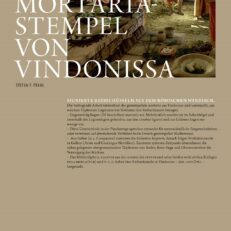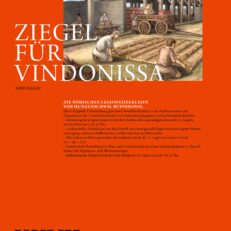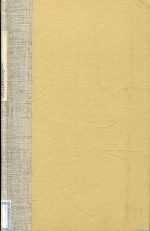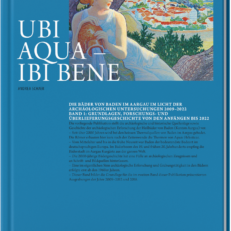Beschreibung
Die vorliegende Publikation stellt die archäologische und historische Quellenlage sowie Geschichte der archäologischen Erforschung der Heilbäder von Baden (Kanton Aargau) vor.
• Seit über 2000 Jahren wird bei den heissen Thermalquellen von Baden im Aargau gebadet. Die Römer erbauten hier kurz nach der Zeitenwende die Thermen von AQUAE HELVETICAE.
• Vom Mittelalter und bis in die frühe Neuzeit war Baden der bedeutendste Badeort im deutschsprachigen Europa. Im Bäderboom des 19. und frühen 20. Jahrhunderts empfing die Bäderstadt im Aargau Kurgäste aus der ganzen Welt.
• Die 2000-jährige Bädergeschichte hat eine Fülle an archäologischen Zeugnissen und an Schrift und Bildquellen hinterlassen.
• Eine eigentliche archäologische Erforschung und Grabungstätigkeit in den Bädern erfolgte erst ab den 1960er-Jahren.
• Dieser Band bildet die Grundlage für die im zweiten Band dieser Publikation präsentierten Ausgrabungen der Jahre 2009–2012 und 2018.
———————————————————————————————————————-
This publication presents the archaeological and historical sources as well as the history of archaeological research on the thermal springs of Baden (Canton Aargau).
– The hot thermal springs of Baden in Aargau have been in use for over 2000 years. The Romans built the thermal springs of AQUAE HELVETICAE here shortly after the turn of the millennium.
– From the Middle Ages and into the early modern period, Baden was the most important spa resort in German-speaking Europe. During the spa boom of the 19th and early 20th centuries, the spa town in Aargau welcomed guests from all over the world.
– The 2000-year history of the baths has left behind a wealth of archaeological evidence as well as written and pictorial sources.
– It wasn’t until the 1960s when archaeological research in a narrow sense and excavation activities were carried out.
– This volume forms the basis for the 2009-2012 and 2018 excavations presented in the second volume of this publication.
————————————————————————————————————————————————————-
La présente publication se consacre à la situation des sources archéologiques et historiques de même qu’à l’histoire de la recherche archéologique dans les bains thermaux de Baden (canton d’Argovie).
• Voilà plus de 2000 ans qu’on se baigne dans les sources thermales de Baden, en Argovie. Peu après le début de notre ère, les Romains édifièrent ici les thermes d’AQUAE HELVETICAE.
• Dès le Moyen Âge et jusqu’au début de l’époque romaine, Baden fut la station thermale la plus importante d’Europe germanophone. Dans le cadre de l’engouement pour les bains qui caractérise le XIXe siècle et le début du XXe siècle, le complexe argovien accueillit des curistes venus du monde entier.
• L’histoire de bains, qui se déroule sur 2000 ans, a livré une multitude de témoignages archéologiques et de sources écrites ou iconographies.
• Les fouilles archéologiques et l’étude des bains n’interviendront qu’à partir des années 1960.
• Le présent volume en précède un second dans lequel on présentera les fouilles entreprises durant les années 2009 à 2012 et en 2018.
———————————————————————————————————————————————————————————-
La seguente pubblicazione presenta una panoramica delle fonti archeologiche e storiche, nonché la storia della ricerca archeologica delle terme di Baden (Canton Argovia).
• Da oltre 2000 anni, le calde sorgenti termali di Baden in Argovia sono utilizzate per fare il bagno. I Romani costruirono qui, agli inizi del I sec. d.C., le terme di AQUAE HELVETICAE.
• Dal Medioevo fino all’inizio dell’età moderna, Baden è stata la località termale più importante nell’Europa germanofona. Durante il boom delle cure termali del XIX e XX secolo, la città termale argoviese ha accolto ospiti provenienti da tutto il mondo.
• La storia termale di oltre 2000 anni ha lasciato una grande quantità di testimonianze archeologiche, nonché di fonti scritte e iconografiche.
• La ricerca archeologica vera e propria e gli scavi nelle terme sono iniziati solo negli anni 1960.
• Questo volume costituisce la base per gli scavi del 2009-2012 e del 2018 presentati nel secondo volume di questa pubblicazione.










Bewertungen
Es gibt noch keine Bewertungen.